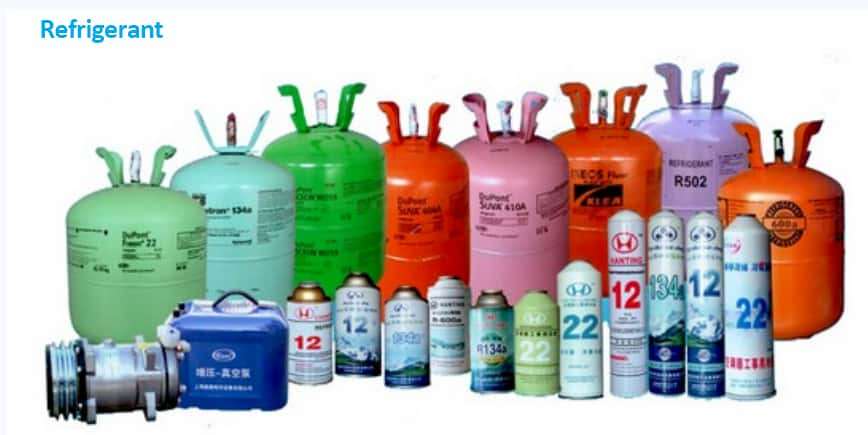As one of the leading supplier of sensing solutions, Winsen has recently launched a new refrigerant sensor, MH-Z1542B-R32 Refrigerant Sensor Module.
MH-Z1542B refrigerant (R32) sensor is a smart infrared type sensor, using non-dispersive infrared (NDIR) principle to detect the existence of refrigerant, with good selectivity and non-oxygen dependent. It is a compact high performance sensor made by combining mature infrared gas detection technology with micro machining and sophisticated circuit design. It is easy to use and can be directly to replace the catalytic type sensor.
Application:
- HVAC system, air conditioner, air compressor, refrigerator to monitor the leakage of refrigerant
- Industrial process and safety monitoring of refrigerant.
| Model No. | MH-Z1542B-R32 |
| Detection Gas | Refrigerant |
| Working voltage | 3.6~5V DC |
| Average current | < 85mA |
| Detection Range | 0~5.00% Vol |
| Interface level | 3.0 V |
| Output signal | UART |
| Preheat time | 3 min |
| Response Time | T25 < 7 s |
| Working temperature | -20 ~ 60℃ |
| Working humidity | 0 ~95% RH (No condensation) |
| Sizes | 32.9x22.3x11.9mm |
| Weight | 35 g |
| Lifespan | >15 years |
Winsen has series of refrigerant sensor for different application demands.
| Product Type | Model No. | Measurement Range | Output |
| Semiconductor sensor | MP510C | 100-10000ppm | Analog Voltage |
| Semiconductor module | ZP201 | 100-10000ppm | PWM |
| NDIR sensor | MH-441D/ MH-441D-454B | 0-5.00%Vol | UART |
| NDIR sensor | MH-Z1542B-R32 | 0-50%LFL | UART, RS485 |
MH-441D/441D-454B NDIR Infrared Refrigerant Sensor
MH-441D series refrigerant sensors use the principle of non-dispersive infrared (NDIR) to detect refrigerant, which has good selectivity and no oxygen dependence.
Features
- High sensitivity, high resolution, fast response
- Output method: UART, analog voltage signal
- Temperature compensation, excellent linear output
- Excellent stability, Long lifespan
- Anti-poisons, anti-vapor interference
- Can replace catalytic type gas sensor directly
MP510C Refrigerant Gas Sensor- flat semiconductor
The MP510C Freon gas sensor uses a multilayer thick film manufacturing process to fabricate heating and measuring electrodes and a metal oxide semiconductor gas-sensitive layer on a miniature Al2O3 ceramic substrate, and encapsulate it in a metal casing. The product has good anti-interference ability against common gases such as alcohol and acetic acid in usage scenarios. Popular used for leak detection of refrigerants in air conditioning and refrigeration systems.
ZP210 refrigerant gas detection module
For the convenience of customers, Winsen has launched a module ZP210 using MP510C sensor for refrigerant gas leak detection. After aging, standardization and calibration, the module has good consistency and very high sensitivity.
Why refrigerant sensors are so important?
As the refrigeration technology becomes more and more mature, air conditioners have a variety of selective refrigeration methods and refrigerants, but currently the most common and widely used in the air conditioning market is vapor compression refrigeration. This cooling method has a strong cooling effect and is very popular. However, it is worth noting that because the vapor compression refrigerant is prone to high pressure during use, it is easy to cause leakage of the refrigeration equipment pipeline. Therefore, the safety during use has become the focus of attention.
Refrigerant leakage is a kind of failure of air-conditioning refrigeration system and unit. The leakage of refrigerant will bring a series of adverse effects to the normal operation of refrigeration equipment, and bring a lot of inconvenience to operation and maintenance. For example, leakage into the unit will cause the unit to Deterioration of performance and reduction of cooling capacity; external leakage will pollute the air environment, endanger personal safety, and affect the performance of the unit.
Therefore, it is particularly important to find leakage cause accurately, quickly, scientifically and professionally and take corresponding safeguard measures in time to reduce the losses caused by leakage.
Types of Refrigerants

In the "Montreal Protocol", the use of chlorofluorocarbons (CFCs) for depleting the ozone layer has been banned.
- Hydrochlorofluorocarbons are referred to as HCFC, including R22, R123, R141b, R142b and other ozone layer destruction factors, which are only a few percent of R11. Therefore, HCFC substances are regarded as the most important transitional substitutes for CFC substances. R22 is scheduled to be phased out in 2020, R123 is scheduled to be phased out in 2030, and developing countries can postpone it for 10 years.
- Hydrofluorocarbons are referred to as HFCs, mainly including R134a, R125, R32, R407c, R410a, R152, etc. The ozone layer destruction coefficient is 0, but the climate warming potential value is very high. The "Montreal Protocol" does not stipulate its trial period, but it is classified as a greenhouse gas in the "United Nations Framework Convention on Climate Change" Kyoto Protocol.
Ozone depletion potential, climate warming potential, safety, including flammability and toxicity, have become the three primary considerations for refrigerant selection.
More sensing solutions, contact Winsen now!







